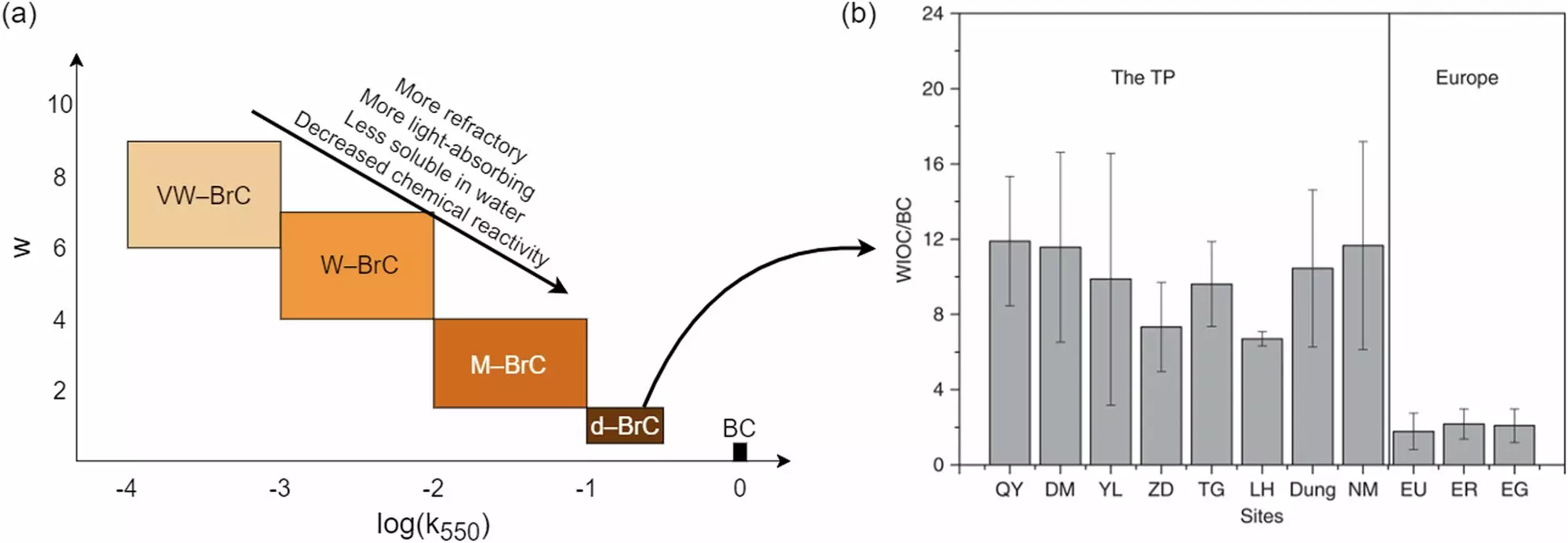Wildfires have a lasting impact on the environment, not only in terms of immediate destruction but also through the particles they leave behind. These residual particles act as potent climate heaters, absorbing sunlight and warming the atmosphere. Specifically, the study discussed in this article focuses on the effects of dark-brown carbon (d-BrC) particles from wildfires on snow melting. While previous research has highlighted the deposition of water-insoluble organic carbon on snow, the study delves deeper into the snow-warming potential of d-BrC.
Researchers at Washington University in St. Louis have conducted a study to model how d-BrC, a type of light-absorbing, water-insoluble organic carbon, contributes to snow melting. Surprisingly, the study reveals that d-BrC is 1.6 times more potent as a snow-warming agent than black carbon, which was previously believed to be the main culprit. This new understanding sheds light on the significant impact of d-BrC on snow reflectance and subsequent warming of the surrounding environment.
The research team likens d-BrC to an “evil cousin” of black carbon, highlighting its similarities in terms of deposition on snow. Just like black carbon, d-BrC cannot be easily washed away or bleached, making it a persistent and effective absorber of sunlight on snow surfaces. As d-BrC accumulates on snow and reduces its reflectivity, the snow warms up, leading to increased air temperatures and exacerbating the warming cycle. Failure to account for d-BrC in climate models has likely resulted in underestimations of snow melt caused by wildfire smoke deposition.
The findings of this study have significant implications for the accuracy of climate models and measurements. By recognizing the substantial contribution of d-BrC to snow melting, researchers can improve the accuracy of their predictions and better understand the impact of wildfires on the environment. As wildfires continue to increase in frequency and intensity, policymakers must take into account the role of d-BrC in anomalous snow melt and develop strategies to mitigate its effects.
Moving forward, the research team plans to conduct real-world experiments to further document the effects of d-BrC on snow melting. By utilizing a four-foot-tall snow globe in the lab, researchers will be able to simulate snow-aerosol interactions and observe the impact of d-BrC deposition. This experimental phase marks an important step in understanding the mechanisms behind snow melting caused by wildfire smoke particles.
The study highlights the critical role of dark-brown carbon particles from wildfires in accelerating snow melt and warming the environment. By shedding light on the potency of d-BrC as a snow-warming agent, researchers have paved the way for more accurate climate models and measurements. As we continue to grapple with the effects of climate change, understanding the impact of wildfire smoke particles on snow melting is essential for developing effective mitigation strategies.


Leave a Reply